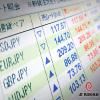- Início
- Comunidade
- Geral
- The Most Popular Technical Indicators in Forex Trading - Eas...
The Most Popular Technical Indicators in Forex Trading - Easy Trading Online
1. Moving Averages (MA)
Moving averages help smooth out price data over a specified time period, making it easier for traders to identify the overall trend of the market. There are two main types of moving averages:
SMA (Simple Moving Average): Calculates the average price of a currency pair over a fixed time period.
EMA (Exponential Moving Average): Gives more weight to recent data, allowing for faster reaction to price changes.
Traders often use moving averages to identify long-term trends and combine them with other indicators to find entry points.
2. Relative Strength Index (RSI)
RSI is an oscillator that helps identify whether a currency pair is overbought or oversold. The RSI ranges from 0 to 100:
RSI > 70: The market may be overbought, suggesting a potential downward correction.
RSI < 30: The market may be oversold, indicating a potential upward reversal.
Traders use RSI to spot potential reversal points and adjust their trades based on overbought or oversold conditions.
3. Moving Average Convergence Divergence (MACD)
MACD is a trend-following momentum indicator that helps traders identify changes in the strength, direction, and duration of a trend. It is composed of two moving averages and a histogram showing the difference between them:
MACD Line: The difference between the short-term and long-term EMAs.
Signal Line: The EMA of the MACD itself.
When the MACD line crosses above the signal line, it's a buy signal. Conversely, when the MACD line crosses below the signal line, it's a sell signal.
4. Bollinger Bands
Bollinger Bands consist of a moving average and two bands (upper and lower) that indicate the market's volatility. The distance between the bands widens when volatility is high and narrows when volatility is low.
Upper Band: Price may reach overbought conditions.
Lower Band: Price may reach oversold conditions.
Traders use Bollinger Bands to detect price volatility and identify potential exit points or reversal opportunities.
5. Fibonacci Retracement
Fibonacci Retracement is a technical tool that helps identify potential support and resistance levels based on Fibonacci ratios. The most commonly used levels are 23.6%, 38.2%, 50%, and 61.8%.
Traders use Fibonacci to pinpoint retracement levels during a trend before the price resumes its original direction, helping them decide on entry or exit points.
6. Average True Range (ATR)
ATR is an indicator that measures the market's volatility over a specific time period. While it does not provide directional signals, it helps traders gauge the degree of market volatility.
ATR is useful for setting stop-loss levels and managing risk, especially in highly volatile markets.
Conclusion
Technical indicators play a crucial role in analyzing and making trading decisions in the Forex market. Each indicator provides different insights, and combining them wisely can help traders optimize their trading strategies. However, traders should be cautious not to rely solely on one indicator and instead use them in conjunction with other analysis tools to achieve the best results.
Curious, which indicator do you rely on the most, or do you prefer to combine them for more reliable signals?
Great breakdown of indicators, appreciate the detailed insights. Personally, I’ve found that understanding how each tool complements the others is key. For example, I often pair the EMA with RSI to filter out false signals. If RSI shows oversold and the EMA supports an upward trend, that gives me more confidence in a long position.
I also think traders should pay attention to how volatility impacts their entries and exits. Indicators like ATR and Bollinger Bands are often overlooked, but they’re incredibly useful for setting more realistic stop-losses and profit targets, especially in fast-moving markets.
What’s made a big difference for me lately is automating some of this analysis. Platforms like Push Button Trading offer tools that help you backtest combinations of these indicators and automate your strategy, saving a lot of manual effort. If anyone’s interested in streamlining their technical analysis and improving execution timing, you can click here: https://www.pushbuttontrading.co/ to explore how it works.
Understanding indicators is one thing using them efficiently is where the real edge comes in.














